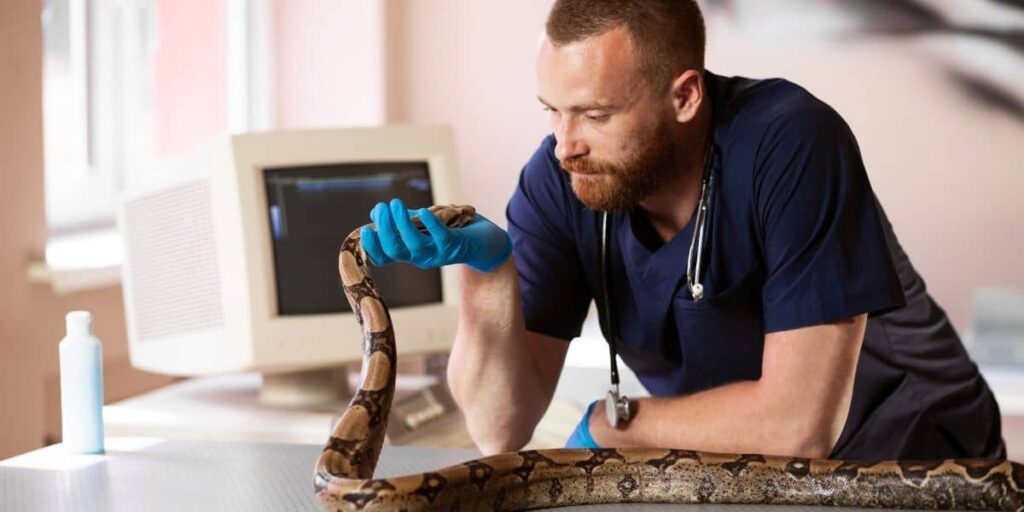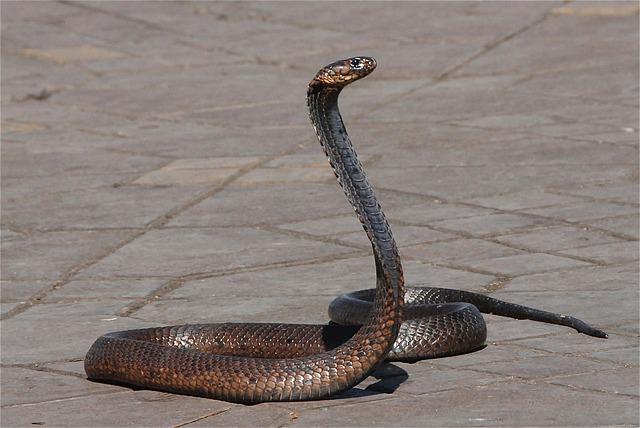There are a lot of things about the snake that is utterly fascinating. If you’re a keen snake fanatic or simply want to get to know your pet a little better, then you have probably asked yourself a lot of questions about your snake’s anatomy. One thing that surprises a lot of people about snakes is their respiratory system.
Snakes do have lungs, but they are vastly different from our own. One of the main reasons for this is that snakes sometimes only have one lung. In some animals, there is a second lung but this is normally extremely small and without function.
Knowing about your snake’s respiratory system is one thing but understanding how it works in depth can give you an advantage when it comes to looking out for potential respiratory illnesses.
So, let’s dive into the world of snake lungs and breathing problems.
Do Snakes Have Lungs?
Yes, snakes do have lungs and much like us, these organs work in a very similar fashion. Air is drawn in through the nostrils and travels down into the lungs where the oxygen is extracted and sent into the bloodstream.
Since carbon dioxide is produced by the cells in the bodywork, this needs to be released. It comes back in through the lungs and as they deflate, the air is pushed back out the same way it came in.
It’s a pretty simple concept until you consider that snakes typically only have one lung. At least, one that functions for breathing. In some snakes, particularly water snakes, there may be a second lung known as a vestigial lung.
While this lung is much smaller and does not serve the snake in its ability to breathe, it does have another purpose. This lung is often there to serve as a flotation device, making the snake more buoyant as it moves through the water.
There are some land-dwelling snakes that also have this second, tiny lung but as things stand, scientists are yet to figure out why this is.
Furthermore, we must consider the shape of the snake’s lungs. Unlike in humans, where the lungs are quite wide and large, the serpent equivalent is much thinner and longer.
This is because a snake has a tubular body that simply couldn’t fit larger internal organs. For this reason, many of the snake’s organs are a very different shape from what we are used to seeing.
Snake Respiratory Infections
One of the things that many new snake owners are unaware of is that these animals are especially susceptible to respiratory tract infections. While these can be potentially life-threatening to a snake, there are some simple things that pet owners can do to spot the problem and treat it before it gets serious.
How To Tell If Your Snake Has An RTI
It is distressing for any pet owner to see their beloved animal suffering so it is important to always keep your eye on the snake to make sure that it is in good health.
When it comes to spotting a respiratory tract infection, there are some clear symptoms that you can look out for.
- Your snake may become very restless when an RTI first sets in. You will typically see them trying to get comfortable with little success. This is largely down to the snake having a build-up of mucus which can affect its ability to breathe. This is very similar to what we would experience when we have a cold or blocked nose.
- When your snake is struggling with a respiratory infection, there is a significant chance that it will go off its food. This can be difficult to judge in the early stages of the infection since some snakes can go a week or two between meals. However, this loss of appetite will soon become apparent particularly if the snake starts to lose weight.
- As the infection progresses, your snake may begin to look swollen in certain parts of the body. This inflammation is a result of the infection.
- The snake may also show physical signs of illness at this point such as sneezing. Furthermore, it is not uncommon for a snake to breathe through its mouth when it has an RTI and it may also make a wheezing sound when breathing.
- One of the most obvious signs that the snake is suffering from a respiratory illness is mucus. This may come from the snake’s nose and mouth.
Treating RTIs In Snakes
It can be worrying if your snake falls ill with a respiratory condition. However, there is some good news. Having your snake seen by a vet as soon as you see any of the signs we have discussed can potentially save its life.
While RTIs can be life-threatening for a snake, it is uncommon that this will be the case when the infection is treated as soon as possible. It is important to go to a vet who specializes in exotic pets.

The most common treatment is a course of antibiotics designed to kill the virus and restore your snake’s health. However, it is important that you play a role in bringing the snake back to health.
Most vets will recommend a special diet for the snake while it recovers so it is important that you stick to this as closely as possible.
How To Prevent Snake Respiratory Problems
Snakes are very delicate animals that require a very specific setup in terms of where they live. While there are articles detailing snake husbandry all over the internet, there are two main things that you need to make a priority; temperature and humidity.
The correct temperature and humidity in the snake’s enclosure will vary depending on the species but this is something that your snake breeder will discuss with you when you adopt the animal.
If the correct humidity and temperature are not maintained, this can weaken the snake’s immune system. In turn, they then become much more likely to develop bacterial and fungal infections.
Along with maintaining these two things, it is also imperative that snake owners keep the enclosure clean and hygienic to prevent a build-up of bacteria.
Conclusion
Snakes only have one functioning lung. While some species have a second, much smaller lung, for the most part, this seems to serve no purpose. This is apart from water snakes who may use this extra lung for buoyancy.
Snakes have delicate lungs and are susceptible to respiratory illnesses so it is important that owners look out for signs of this and have it treated as quickly as possible. Doing so could be the difference between the snake recovering and the condition becoming fatal.
- Are Garter Snakes Friendly? Here’s What You Need to Know
- Ball Python Continually Opening Mouth. Causes and Solutions
- Do Ball Pythons Live Underground? Exploring the Natural Habitat of Ball Pythons
- Do I Need to Mist a Ball Python Tank? A Clear Answer
- Ball Python Body Language: Understanding Your Pet’s Nonverbal Communication




